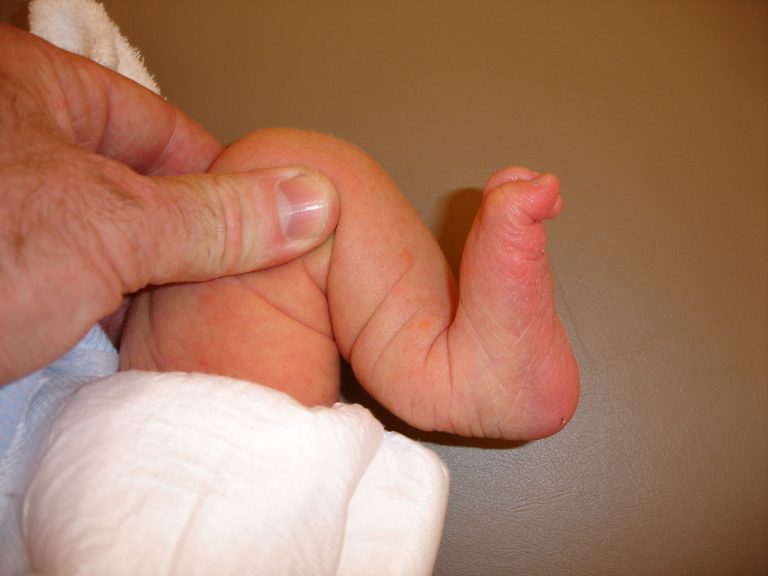What is it?
Calcaneovalgus foot involves the foot of a newborn baby being in a position which is excessively bent up. In some cases the top of the babies foot may be touching the baby’s shin.
In this condition the baby’s foot is flexible and can be gently corrected to a normal position. The deformity is thought to occur because of the baby’s position in the uterus, this is known as ‘intrauterine packaging’.
A calcaneovalgus foot is not painful.
Associations
Most calcaneovalgus feet are due to the babies position in the uterus and can be associated with hip dysplasia. A very small number of babies with the condition also have bowing of the shin bone.

Who gets it?
Calncaneovalgus foot occurs in about 1 in 1000 births and is more likely to occur in first-born children and girls. It can affect just one, or both feet.
What tests are needed?
Calcaneovalgus foot is usually diagnosed by appearance at birth. Special tests such as X-rays are not usually required.
(I would recommend an Ultrasound of your baby’s hips. This is to test for developmental hip dysplasia (DDH), which sometimes occurs in babies who have intrauterine packaging conditions.)
How is it treated?
Often no treatment is required to treat a typical calcaneovalgus foot. This is because the underlying bones, joints and muscles are all normal. When the baby is born, the babies foot movement is no longer restricted. The baby can move his/her own foot normally and will gradually regain a normal foot posture.
Sometimes gentle stretches can help your baby regain normal foot posture, your doctor or physiotherapist will demonstrate these to you if required.
What’s the natural history?
A calcaneovalgus foot will usually resolve within the first few months of your baby’s life and your baby’s foot posture will be normal. It is uncommon to have any complications or ongoing issues from this condition.
